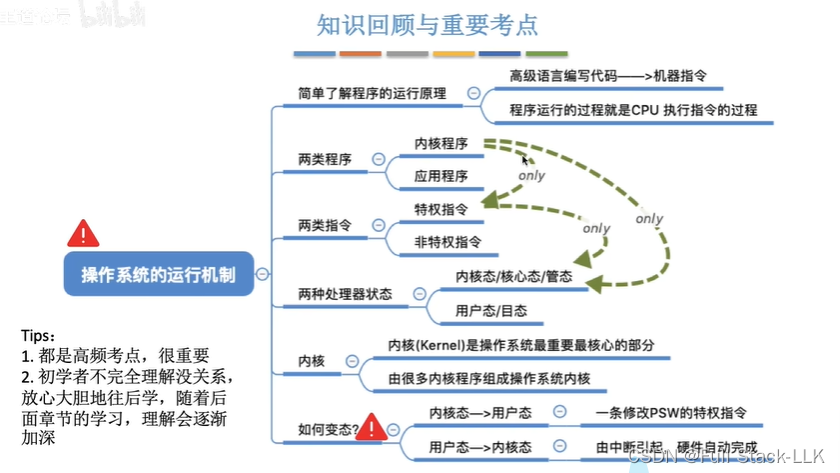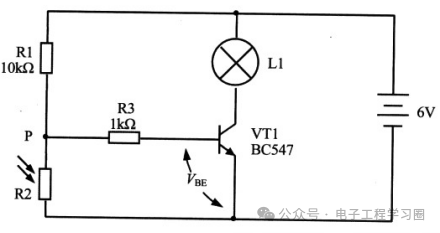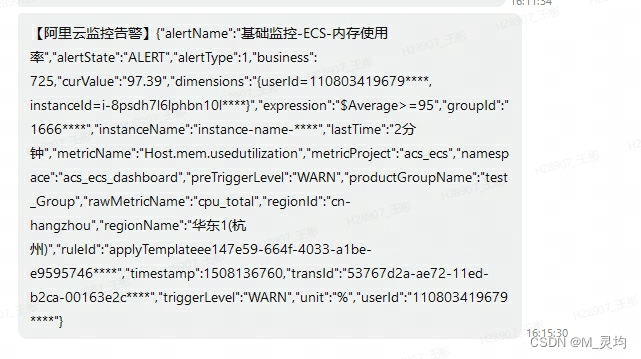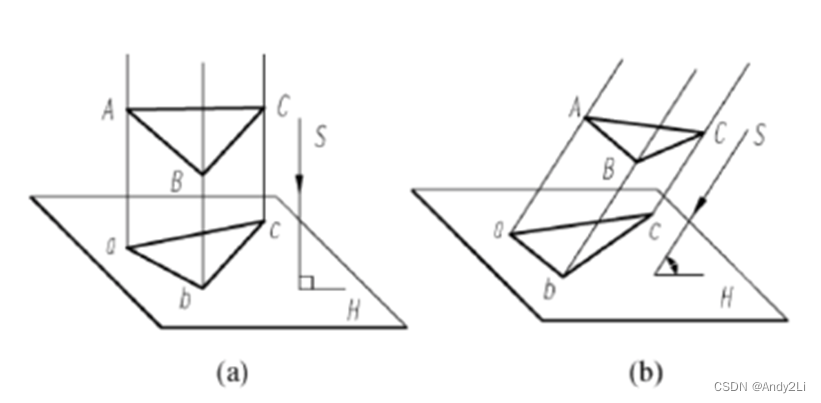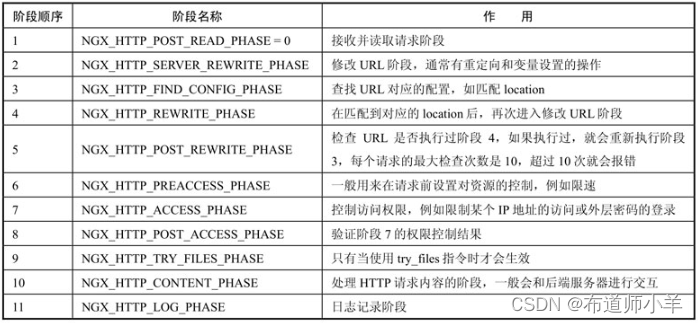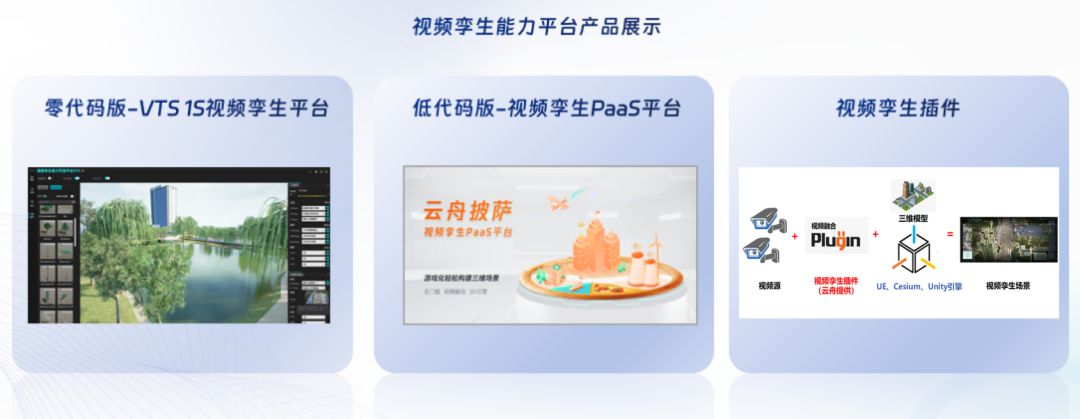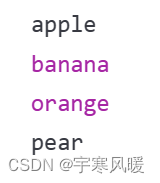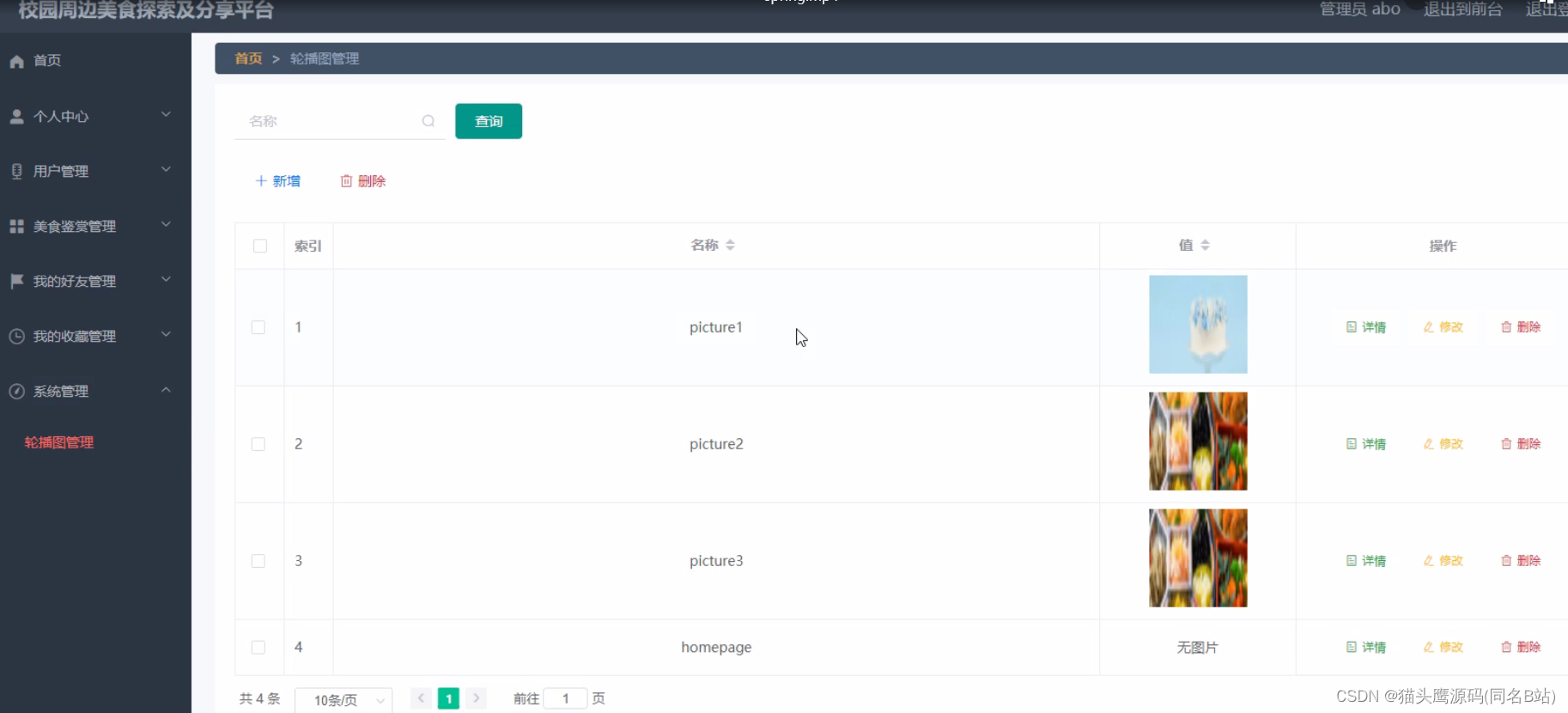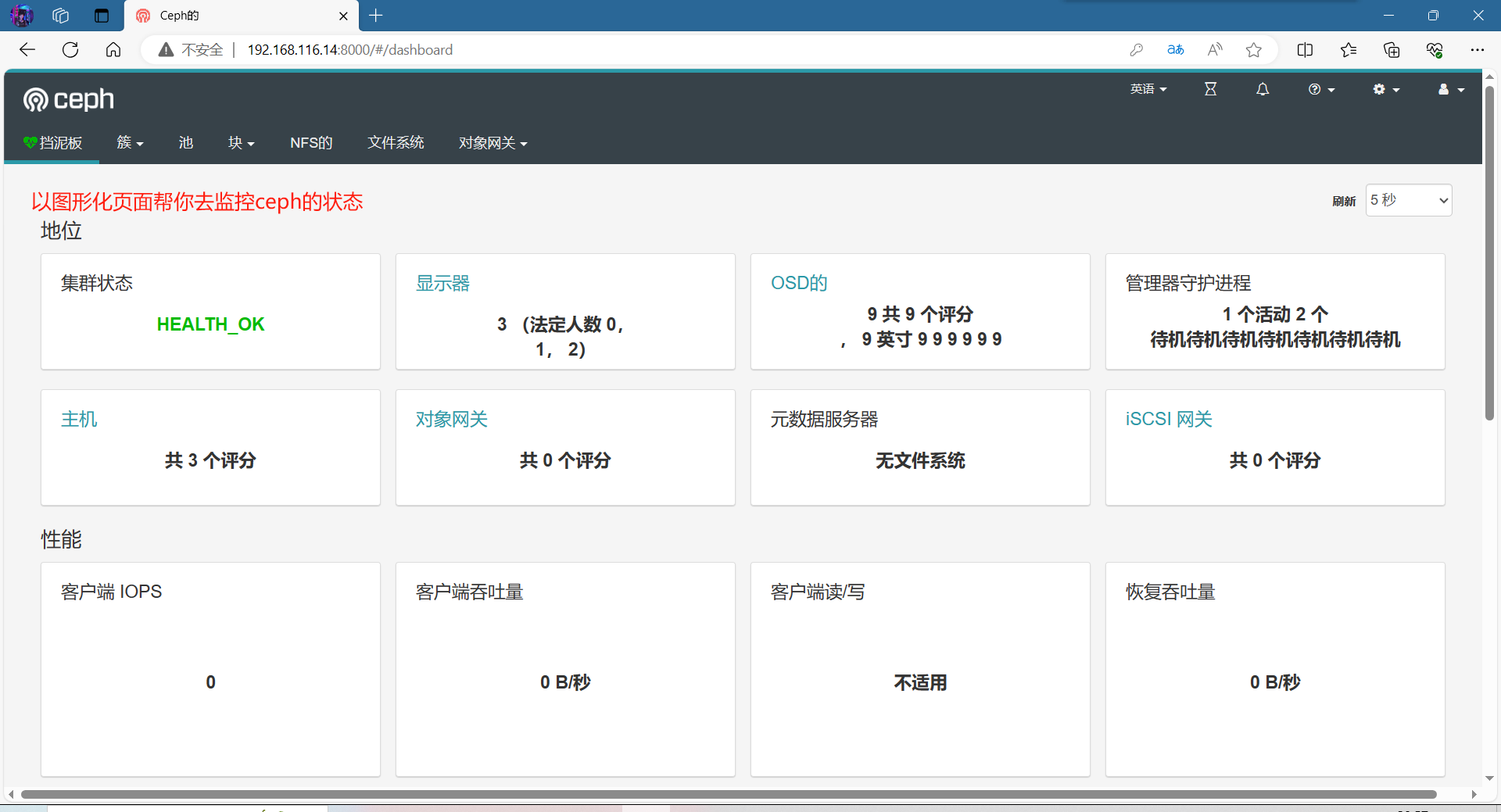🚀一、ArkTS语言基本语法
🔎1.简介
HarmonyOS的ArkTS语言是一种基于TypeScript开发的语言,它专为HarmonyOS系统开发而设计。ArkTS语言结合了JavaScript的灵活性和TypeScript的严谨性,使得开发者能够快速、高效地开发出高质量的HarmonyOS应用程序。
ArkTS语言具有以下特点:
静态类型检查:开发者在编写代码时可以使用类型注解来进行类型检查,从而减少因类型错误而导致的bug。
异步/同步编程:ArkTS语言支持基于Promise和async/await的异步/同步编程方式,能够更好地处理异步操作。
内置模块:ArkTS语言内置了许多常用的模块,如文件系统、网络请求、图形渲染等,使得开发者不必自己编写这些模块。
兼容性:ArkTS语言使用TypeScript语法,可以与JavaScript代码无缝集成,并且可以编译成JavaScript代码来在其他平台上运行。
ArkTS语言基础类库是HarmonyOS系统上为应用开发者提供的常用基础能力,主要包含能力如下图所示:
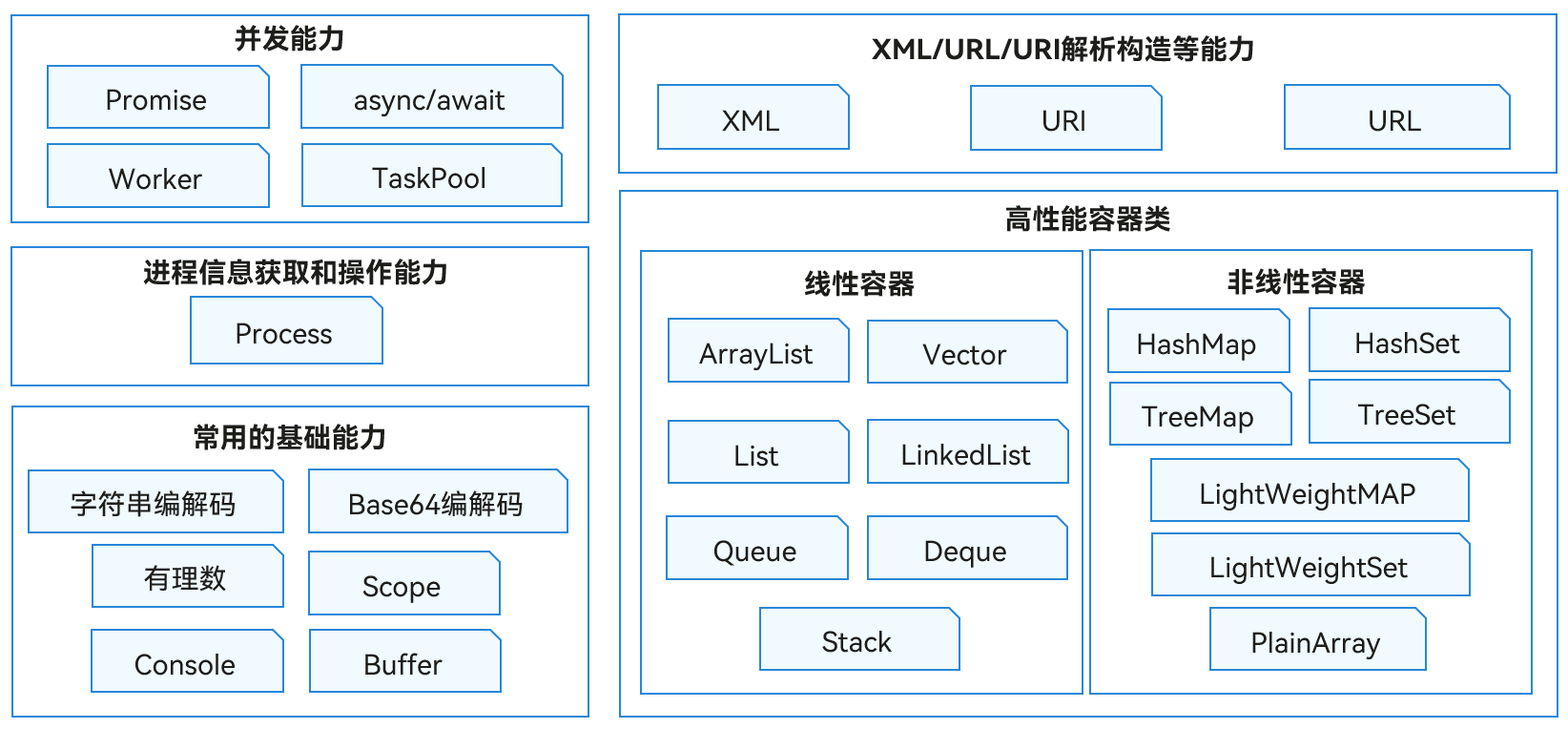
ArkTS是HarmonyOS优选的主力应用开发语言。ArkTS围绕应用开发在TypeScript(简称TS)生态基础上做了进一步扩展,继承了TS的所有特性,是TS的超集。
ArkTS和HTML的差别:
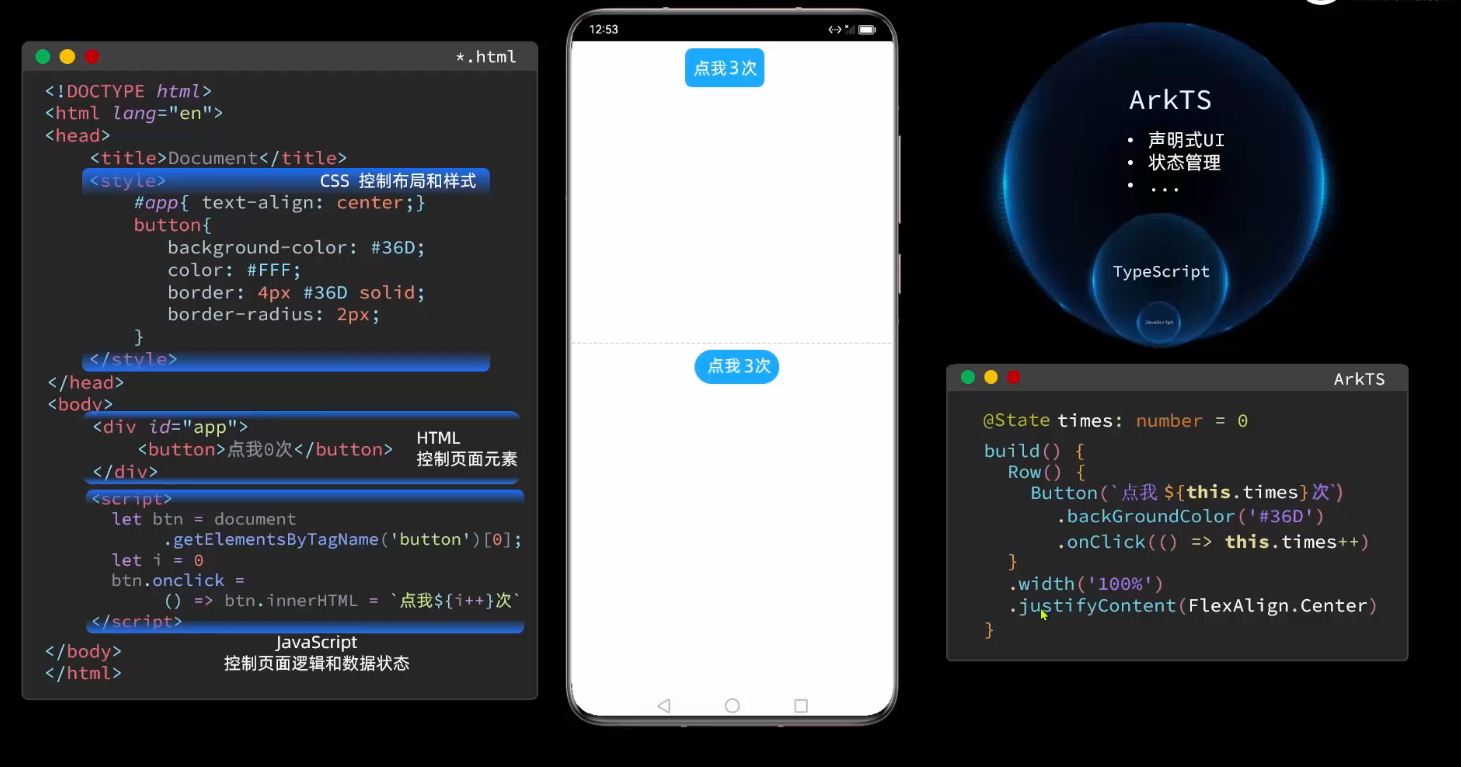
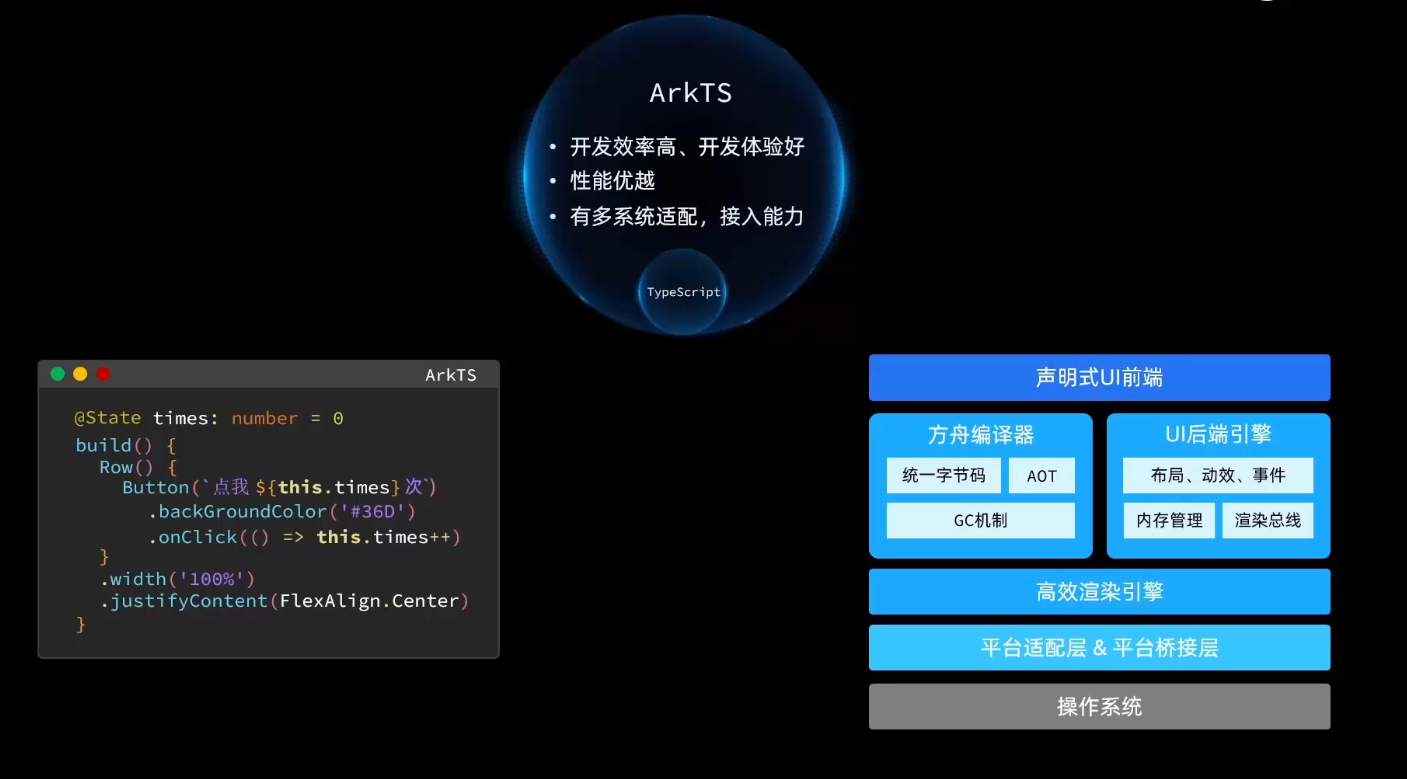
🔎2.TypeScript的基础语法
TypeScript是一种由微软开发的JavaScript超集语言,它支持JavaScript的所有语法,但添加了一些新的特性和语法,使开发更加可靠和高效。TypeScript最大的特点是引入了静态类型,开发者可以在编译时发现类型错误,提高代码的可维护性和可读性。
TypeScript代码可以在编译时被转换成JavaScript代码,在浏览器和Node.js环境下都可以运行。虽然TypeScript相对于JavaScript来说更加复杂,但是它可以帮助开发者更好地组织和管理复杂的项目,特别是在团队协作中提高代码的质量和可维护性。
TypeScript基础知识包括基本类型、变量声明、函数、类、接口、泛型等。另外,TypeScript还支持模块化开发,可以使用ES模块规范或者CommonJS规范导入和导出模块。在实际项目开发中,TypeScript还可以结合工具链如Webpack、Babel进行编译、打包等操作。
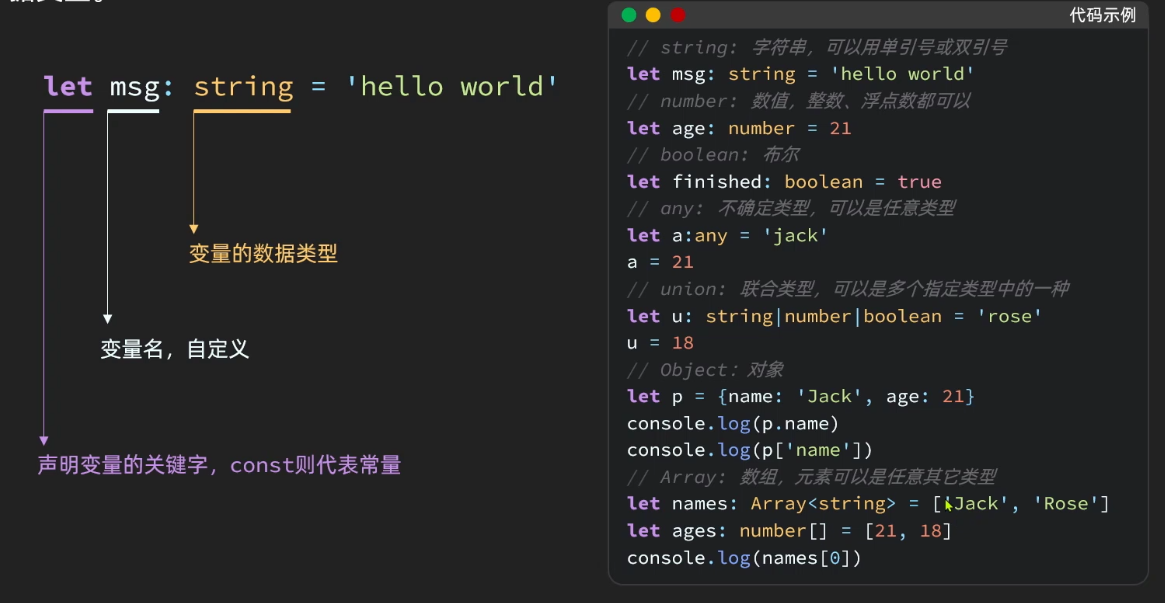
除了上面提到的变量声明、函数定义、类定义、接口定义和枚举类型外,TypeScript还有一些基础语法需要掌握:
🦋2.1 类型注解
TypeScript的静态类型检查是通过类型注解实现的。在声明变量或函数时,可以使用冒号加上类型注解,指定变量或函数的类型。例如:
let name: string = "TypeScript";function add(a: number, b: number): number {return a + b;
}🦋2.2 接口
TypeScript的接口是用来描述对象的形状的。可以定义对象需要包含哪些属性和方法,以及它们的类型。例如:
interface Person {name: string;age: number;sayHello(): void;
}let tom: Person = {name: "Tom",age: 18,sayHello: function() {console.log(`Hello, my name is ${this.name}!`);}
};🦋2.3 泛型
TypeScript的泛型可以帮助我们编写更加灵活、可重用的代码。它允许在编写函数、类或接口时使用参数化类型,从而提高代码的通用性和可读性。例如:
function identity<T>(arg: T): T {<details>
<summary>点击查看代码</summary>function identity(arg: T): T {return arg;}
let output = identity("TypeScript");console.log(output); // 输出 TypeScript
</details>return arg;
}let output = identity<string>("TypeScript");
console.log(output); // 输出 TypeScript🦋2.4 类的继承
TypeScript的类可以继承其他类,从而实现代码的重用和扩展。通过关键字extends可以让一个类继承另一个类,并继承其属性和方法。例如:
class Animal {name: string;constructor(name: string) {this.name = name;}move(distance: number = 0) {console.log(`${this.name} moved ${distance}m.`);}
}class Dog extends Animal {bark() {console.log("Woof! Woof!");}
}let dog = new Dog("Bobby");
dog.move(10); // 输出 "Bobby moved 10m."
dog.bark(); // 输出 "Woof! Woof!"🦋2.5 类的访问修饰符
TypeScript的类可以通过访问修饰符来控制类的属性和方法的访问权限。有三个访问修饰符可以使用:public、private和protected。默认情况下,都是public。
public:公共的,任何外部或内部都可以访问。
private:私有的,只有类的内部可以访问,外部无法访问。
protected:受保护的,只有类的内部和其子类可以访问,外部无法访问。
class Person {protected name: string;constructor(name: string) {this.name = name;}protected sayHello() {console.log(`Hello, I'm ${this.name}.`);}
}class Student extends Person {constructor(name: string) {super(name);}public sayHelloToTeacher(teacher: Person) {console.log(`Hello, ${teacher.name}, I'm ${this.name}.`);}
}let tom = new Student("Tom");
let bob = new Person("Bob");
tom.sayHelloToTeacher(bob); // 输出 "Hello, Bob, I'm Tom."
bob.sayHello(); // 报错:属性 'sayHello' 受保护,只能在类 'Person' 及其子类中访问。以上只是举例一些TS的基础语法,TS内容远不止这些不懂的可以去学学TS。
🔎3.ArkTS的基本组成
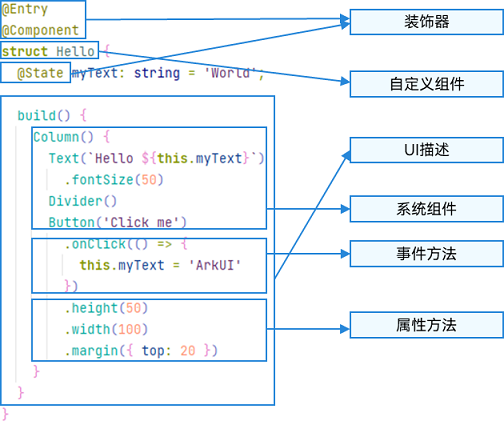
装饰器:用于装饰类、结构、方法以及变量,并赋予其特殊的含义。如上述示例中@Entry、@Component和@State都是装饰器,@Component表示自定义组件,@Entry表示该自定义组件为入口组件,@State表示组件中的状态变量,状态变量变化会触发UI刷新。
UI描述:以声明式的方式来描述UI的结构,例如build()方法中的代码块。
自定义组件:可复用的UI单元,可组合其他组件,如上述被@Component装饰的struct Hello。
系统组件:ArkUI框架中默认内置的基础和容器组件,可直接被开发者调用,比如示例中的Column、Text、Divider、Button。
属性方法:组件可以通过链式调用配置多项属性,如fontSize()、width()、height()、backgroundColor()等。
事件方法:组件可以通过链式调用设置多个事件的响应逻辑,如跟随在Button后面的onClick()。系统组件、属性方法、事件方法具体使用可参考基于ArkTS的声明式开发范式。
除此之外,ArkTS扩展了多种语法范式来使开发更加便捷:
@Builder/@BuilderParam:特殊的封装UI描述的方法,细粒度的封装和复用UI描述。
@Extend/@Style:扩展内置组件和封装属性样式,更灵活地组合内置组件。stateStyles:多态样式,可以依据组件的内部状态的不同,设置不同样式。
🔎4.自定义组件
@Component
struct HelloComponent {@State message: string = 'Hello, World!';build() {// HelloComponent自定义组件组合系统组件Row和TextRow() {Text(this.message).onClick(() => {// 状态变量message的改变驱动UI刷新,UI从'Hello, World!'刷新为'Hello, ArkUI!'this.message = 'Hello, ArkUI!';})}}
}@Entry
@Component
struct ParentComponent {build() {Column() {Text('ArkUI message')HelloComponent({ message: 'Hello, World!' });Divider()HelloComponent({ message: '你好!' });}}
}struct:自定义组件基于struct实现,struct + 自定义组件名 +{…}的组合构成自定义组件,不能有继承关系。对于struct的实例化,可以省略new。
build()函数:build()函数用于定义自定义组件的声明式UI描述,自定义组件必须定义build()函数。
@Entry:@Entry装饰的自定义组件将作为UI页面的入口。在单个UI页面中,最多可以使用@Entry装饰一个自定义组件。@Entry可以接受一个可选的LocalStorage的参数。
🦋4.1 build()函数规范1、根节点唯一
@Entry
@Component
struct MyComponent {build() {// 根节点唯一且必要,必须为容器组件Row() {ChildComponent() }}
}@Component
struct ChildComponent {build() {// 根节点唯一且必要,可为非容器组件Image('test.jpg')}
}2、不允许声明本地变量、打印、作用域
build() {// 反例:不允许声明本地变量let a: number = 1;// 反例:不允许console.infoconsole.info('print debug log');// 反例:不允许本地作用域{...}
}3、不允许调用没有用@Builder装饰的方法,允许系统组件的参数是TS方法的返回值。
@Component
struct ParentComponent {doSomeCalculations() {}calcTextValue(): string {return 'Hello World';}@Builder doSomeRender() {Text(`Hello World`)}build() {Column() {// 反例:不能调用没有用@Builder装饰的方法this.doSomeCalculations();// 正例:可以调用this.doSomeRender();// 正例:参数可以为调用TS方法的返回值Text(this.calcTextValue())}}
}4、不允许switch和表达式
build() {Column() {// 反例:不允许使用switch语法switch (expression) {case 1:Text('...')break;case 2:Image('...')break;default:Text('...')break;}// 反例:不允许使用表达式(this.aVar > 10) ? Text('...') : Image('...')}
}🔎5.页面和自定义组件生命周期
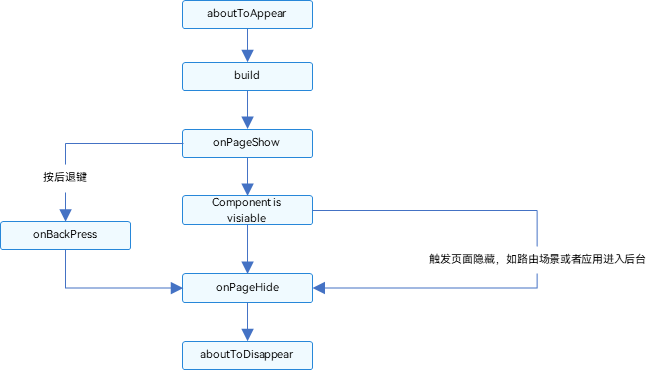
页面生命周期,即被@Entry装饰的组件生命周期,提供以下生命周期接口:
-
onPageShow:页面每次显示时触发。
-
onPageHide:页面每次隐藏时触发一次。
-
onBackPress:当用户点击返回按钮时触发。
组件生命周期,即一般用@Component装饰的自定义组件的生命周期,提供以下生命周期接口:
-
aboutToAppear:组件即将出现时回调该接口,具体时机为在创建自定义组件的新实例后,在执行其build()函数之前执行。
-
aboutToDisappear:在自定义组件即将析构销毁时执行。
// Index.ets
import router from '@ohos.router';@Entry
@Component
struct MyComponent {@State showChild: boolean = true;// 只有被@Entry装饰的组件才可以调用页面的生命周期onPageShow() {console.info('Index onPageShow');}// 只有被@Entry装饰的组件才可以调用页面的生命周期onPageHide() {console.info('Index onPageHide');}// 只有被@Entry装饰的组件才可以调用页面的生命周期onBackPress() {console.info('Index onBackPress');}// 组件生命周期aboutToAppear() {console.info('MyComponent aboutToAppear');}// 组件生命周期aboutToDisappear() {console.info('MyComponent aboutToDisappear');}build() {Column() {// this.showChild为true,创建Child子组件,执行Child aboutToAppearif (this.showChild) {Child()}// this.showChild为false,删除Child子组件,执行Child aboutToDisappearButton('create or delete Child').onClick(() => {this.showChild = false;})// push到Page2页面,执行onPageHideButton('push to next page').onClick(() => {router.pushUrl({ url: 'pages/Page2' });})}}
}@Component
struct Child {@State title: string = 'Hello World';// 组件生命周期aboutToDisappear() {console.info('[lifeCycle] Child aboutToDisappear')}// 组件生命周期aboutToAppear() {console.info('[lifeCycle] Child aboutToAppear')}build() {Text(this.title).fontSize(50).onClick(() => {this.title = 'Hello ArkUI';})}
}🔎6.装饰函数
🦋6.1 @Builder装饰器
@Builder主要是定义页面UI
☀️6.1.1 装饰指向
1、自定义组件内自定义构建函数
@Builder MyBuilderFunction(){ ... }
#使用
this.MyBuilderFunction(){ ... }2、MyGlobalBuilderFunction()
@Builder function MyGlobalBuilderFunction(){ ... }
#使用
MyGlobalBuilderFunction()☀️6.1.2 参数传递
1、按引用传递参数
@Builder function ABuilder($$: { paramA1: string }) {Row() {Text(`UseStateVarByReference: ${$$.paramA1} `)}
}
@Entry
@Component
struct Parent {@State label: string = 'Hello';build() {Column() {// 在Parent组件中调用ABuilder的时候,将this.label引用传递给ABuilderABuilder({ paramA1: this.label })Button('Click me').onClick(() => {// 点击“Click me”后,UI从“Hello”刷新为“ArkUI”this.label = 'ArkUI';})}}
}2、按值传递参数
@Builder function ABuilder(paramA1: string) {Row() {Text(`UseStateVarByValue: ${paramA1} `)}
}
@Entry
@Component
struct Parent {label: string = 'Hello';build() {Column() {ABuilder(this.label)}}
}🦋6.2 @BuilderParam装饰器
@BuilderParam用来装饰指向@Builder方法的变量,开发者可在初始化自定义组件时对此属性进行赋值,为自定义组件增加特定的功能。
☀️6.2.1 装饰指向
1、本地初始化@BuilderParam
@Builder function GlobalBuilder0() {}@Component
struct Child {@Builder doNothingBuilder() {};@BuilderParam aBuilder0: () => void = this.doNothingBuilder;@BuilderParam aBuilder1: () => void = GlobalBuilder0;build(){}
}2、初始化子组件@BuilderParam
@Component
struct Child {@BuilderParam aBuilder0: () => void;build() {Column() {this.aBuilder0()}}
}@Entry
@Component
struct Parent {@Builder componentBuilder() {Text(`Parent builder `)}build() {Column() {Child({ aBuilder0: this.componentBuilder })}}
}this都是器其本身,不会存在传递。
☀️6.2.2 使用场景
1、参数化传递
@Builder function GlobalBuilder1($$ : {label: string }) {Text($$.label).width(400).height(50).backgroundColor(Color.Blue)
}@Component
struct Child {label: string = 'Child'// 无参数类,指向的componentBuilder也是无参数类型@BuilderParam aBuilder0: () => void;// 有参数类型,指向的GlobalBuilder1也是有参数类型的方法@BuilderParam aBuilder1: ($$ : { label : string}) => void;build() {Column() {this.aBuilder0()this.aBuilder1({label: 'global Builder label' } )}}
}@Entry
@Component
struct Parent {label: string = 'Parent'@Builder componentBuilder() {Text(`${this.label}`)}build() {Column() {this.componentBuilder()Child({ aBuilder0: this.componentBuilder, aBuilder1: GlobalBuilder1 })}}
}2、尾随闭包
// xxx.ets
@Component
struct CustomContainer {@Prop header: string;@BuilderParam closer: () => voidbuild() {Column() {Text(this.header).fontSize(30)this.closer()}}
}@Builder function specificParam(label1: string, label2: string) {Column() {Text(label1).fontSize(30)Text(label2).fontSize(30)}
}@Entry
@Component
struct CustomContainerUser {@State text: string = 'header';build() {Column() {// 创建CustomContainer,在创建CustomContainer时,通过其后紧跟一个大括号“{}”形成尾随闭包// 作为传递给子组件CustomContainer @BuilderParam closer: () => void的参数CustomContainer({ header: this.text }) {Column() {specificParam('testA', 'testB')}.backgroundColor(Color.Yellow).onClick(() => {this.text = 'changeHeader';})}}}
}🦋6.3 @Styles装饰器
@Styles装饰器主要是定义公共样式
☀️6.3.1 装饰指向
1、全局
// 全局
@Styles function functionName() { ... }// 在组件内
@Component
struct FancyUse {@Styles fancy() {.height(100)}
}2、组件内
@Component
struct FancyUse {@State heightValue: number = 100@Styles fancy() {.height(this.heightValue).backgroundColor(Color.Yellow).onClick(() => {this.heightValue = 200})}
}☀️6.3.2 使用场景
// 定义在全局的@Styles封装的样式
@Styles function globalFancy () {.width(150).height(100).backgroundColor(Color.Pink)
}@Entry
@Component
struct FancyUse {@State heightValue: number = 100// 定义在组件内的@Styles封装的样式@Styles fancy() {.width(200).height(this.heightValue).backgroundColor(Color.Yellow).onClick(() => {this.heightValue = 200})}build() {Column({ space: 10 }) {// 使用全局的@Styles封装的样式Text('FancyA').globalFancy ().fontSize(30)// 使用组件内的@Styles封装的样式Text('FancyB').fancy().fontSize(30)}}
}🦋6.4 @Extend装饰器
@Extend用于扩展原生组件样式,作用和@Styles差不多。
☀️6.4.1 装饰指向@Extend仅支持定义在全局,不支持在组件内部定义
1、@Extend支持封装指定的组件的私有属性和私有事件
// @Extend(Text)可以支持Text的私有属性fontColor
@Extend(Text) function fancy () {.fontColor(Color.Red)
}
// superFancyText可以调用预定义的fancy
@Extend(Text) function superFancyText(size:number) {.fontSize(size).fancy()
}2、@Extend装饰的方法支持参数
// xxx.ets
@Extend(Text) function fancy (fontSize: number) {.fontColor(Color.Red).fontSize(fontSize)
}@Entry
@Component
struct FancyUse {build() {Row({ space: 10 }) {Text('Fancy').fancy(16)Text('Fancy').fancy(24)}}
}3、@Extend装饰的方法的参数可以为function
@Extend(Text) function makeMeClick(onClick: () => void) {.backgroundColor(Color.Blue).onClick(onClick)
}@Entry
@Component
struct FancyUse {@State label: string = 'Hello World';onClickHandler() {this.label = 'Hello ArkUI';}build() {Row({ space: 10 }) {Text(`${this.label}`).makeMeClick(this.onClickHandler.bind(this))}}
}4、@Extend的参数可以为状态变量
@Extend(Text) function fancy (fontSize: number) {.fontColor(Color.Red).fontSize(fontSize)
}@Entry
@Component
struct FancyUse {@State fontSizeValue: number = 20build() {Row({ space: 10 }) {Text('Fancy').fancy(this.fontSizeValue).onClick(() => {this.fontSizeValue = 30})}}
}☀️6.4.2 使用场景
@Extend(Text) function fancyText(weightValue: number, color: Color) {.fontStyle(FontStyle.Italic).fontWeight(weightValue).backgroundColor(color)
}@Entry
@Component
struct FancyUse {@State label: string = 'Hello World'build() {Row({ space: 10 }) {Text(`${this.label}`).fancyText(100, Color.Blue)Text(`${this.label}`).fancyText(200, Color.Pink)Text(`${this.label}`).fancyText(300, Color.Orange)}.margin('20%')}
}🔎7.多态样式
stateStyles是属性方法,可以根据UI内部状态来设置样式,类似于css伪类,但语法不同。ArkUI提供以下四种状态:
-
focused:获焦态
-
normal:正常态
-
pressed:按压态
-
disabled:不可用态
🦋7.1 基本使用
@Entry
@Component
struct CompWithInlineStateStyles {@State focusedColor: Color = Color.Red;normalColor: Color = Color.Greenbuild() {Column() {Button('clickMe').height(100).width(100).stateStyles({normal: {.backgroundColor(this.normalColor)},focused: {.backgroundColor(this.focusedColor)}}).onClick(() => {this.focusedColor = Color.Pink}).margin('30%')}}
}🦋7.2 @Styles和stateStyles联合使用
@Entry
@Component
struct MyComponent {@Styles normalStyle() {.backgroundColor(Color.Gray)}@Styles pressedStyle() {.backgroundColor(Color.Red)}build() {Column() {Text('Text1').fontSize(50).fontColor(Color.White).stateStyles({normal: this.normalStyle,pressed: this.pressedStyle,})}}
}🦋7.3 stateStyles里使用常规变量和状态变量
@Entry
@Component
struct CompWithInlineStateStyles {@State focusedColor: Color = Color.Red;normalColor: Color = Color.Greenbuild() {Button('clickMe').height(100).width(100).stateStyles({normal: {.backgroundColor(this.normalColor)},focused: {.backgroundColor(this.focusedColor)}}).onClick(() => {this.focusedColor = Color.Pink}).margin('30%')}
}文章转载自:蜀道山QAQ
原文链接:https://www.cnblogs.com/shudaoshan/p/17968508
体验地址:引迈 - JNPF快速开发平台_低代码开发平台_零代码开发平台_流程设计器_表单引擎_工作流引擎_软件架构

